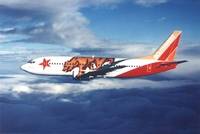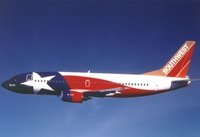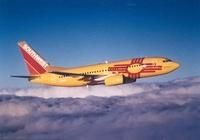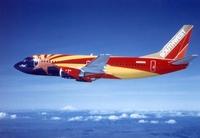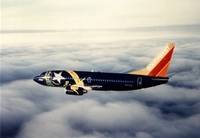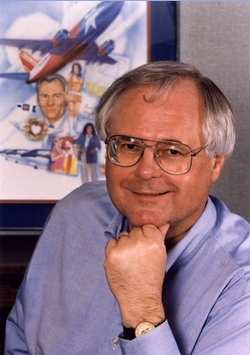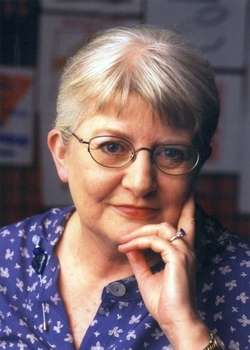Helping Innovation Bear Fruit
 The airline industry's
most-consistent success story over the past three decades has been
Southwest Airlines, seen then as an unorthodox upstart, headed by a
hyper-optimistic visionary.
The airline industry's
most-consistent success story over the past three decades has been
Southwest Airlines, seen then as an unorthodox upstart, headed by a
hyper-optimistic visionary.
Southwest, barely noticed in the industry when it began its
three-city network in Texas in 1971, is now one of the world's
largest airlines; more astoundingly, it is the world's only
consistently-profitable major airline, posting profits as early as
1973, and weathering the 21st Century in the black.
The Southwest "formula" -- one model of aircraft, quick
turnaround, cooperative labor/management attitudes, point-to-point,
no-frills service -- has been copied, and sometimes copied well;
but the results of merely copying the formula have been uneven.
There must be something else in the recipe.
That "something else" is the subject of this interview. In an
attempt to better-understand what else has promoted SWA's continued
and continuing success, Aero-News sought out one of the living
examples of the kind of attitude and enthusiasm the airline's image
typifies.
We spent some enlightening time with 25-year Southwest
Airlines Flight Attendant, Kay McKinney (pictured below,
in her 1978 uniform), who talked with us during a break from her
flight schedule. Kay, who moved to Dallas as a teen, has been
flying for Southwest since the days of the go-go boots and hot
pants, the days when "stewardess" was perceived as a glamour job
more than as a profession, as a "flying waitress" more than as
today's valued, highly-skilled part of the flight safety crew.
 It's a tough job today, too, as Flight
Attendants are not only the airline's most-visible ambassadors, but
also must be prepared to handle... well, just about everything --
first aid, diplomacy, public relations, evacuations, and even parts
of security.
It's a tough job today, too, as Flight
Attendants are not only the airline's most-visible ambassadors, but
also must be prepared to handle... well, just about everything --
first aid, diplomacy, public relations, evacuations, and even parts
of security.
Kay told us, "Things have certainly changed in the airline
business, and the changes haven't all happened since September 11,
2001." Kay said she "...started in January of 1978, with classes
held near Love Field, at a facility called Regal Row. It had a
flight lounge, dispatch, shopping -- it was a 'one-stop shopping'
place." She misses the atmosphere: "It's [the airline is] bigger
now -- boy, is it! Sometimes, going to the credit union, I'll still
cut down Regal Row, just to reminisce." Kay's employee number is
1817. (They're in the 70,000s now.)

It was the job every girl wanted.
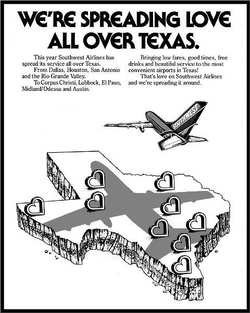 Ms. McKinney was a natural. "I
really wanted to be a stewardess -- it's not a cliche. I really was
enamored with the whole package -- travel, fun, people -- it seemed
like such a fun thing to do. I had a family member who worked for
American at the time; we talked a lot, and that made an impression
on me."
Ms. McKinney was a natural. "I
really wanted to be a stewardess -- it's not a cliche. I really was
enamored with the whole package -- travel, fun, people -- it seemed
like such a fun thing to do. I had a family member who worked for
American at the time; we talked a lot, and that made an impression
on me."
Imagine: out of high school, and low on
self-confidence. "When I left high school," Kay remembered, "I
think I thought I couldn't do it. I didn't have a lot of
self-confidence; I just postponed it for a while." That didn't last
long. "In 1977, I ran into a girl I had known, who had worked for
Braniff, and went on to Southwest. She told me how much fun it was
-- we had nine cities, and nine airplanes, and maybe 75 flight
attendants. We weren't gone overnight." Kay decided to listen to
her dream. "She gave me the name of the lady who did our flight
attendant training, and I just called her and made an appointment."
That was 1978, the year Southwest's first Captain (and President),
Lamar Muse, handed all the reins to (co-founder) Herb Kelleher.
They didn't have layers of insulation between the airline and
the public. "You literally just went in, talked with Diana Lyons,
and then with Mr. Herring ['Bud' Herring, VP of In-Flight]. That
was the whole interview process -- you just talked with them." Kay
made a good impression: "Then I got a letter in two weeks, with a
start date for class... I've been there ever since." Was that a
good thing? "It was the smartest thing I ever did for myself," she
told us.
We noted that Kay still sounds as enthusiastic as a new recruit.
"That's the thing about Southwest," she said. "All the employees
are recruiters. We're our own best recruiters and advertisers."
The customer mix has changed.
"It's a completely different thing now," Kay relayed. "You have
a real cross-section of travelers. In the 1970s, you had the
business traveler -- that's how airlines made their money. Even
Southwest catered to the business travelers." That catering
extended past the stewardesses' uniforms, too:
"We had fares during the day, that changed at 7PM... it's like
somebody drew a line: 'this is when the business traveler flies;
then after that, you get to some other type of people.' Monday
through Friday, until 7PM, all drinks, cocktails were free." That
had a predictable result: "Boy, did we serve a lot of cocktails
back then!"
That was then... "Now, it's night and day," Kay told us. "You
have the full mix, all day -- seniors, business travelers,
unaccompanied minors, families -- all day, every day, from all over
the world. You have groups -- from China, Japan, France, Germany --
once these people get to the US, they can literally hop from one US
city to another, because it's so inexpensive. It's akin to European
rail."
Another thing changed, markedly. When people
used to travel by air, the flight itself was an 'event.' "People
dressed a lot differently then," Kay noted. "Even businessmen don't
wear suits any more. We feel that Southwest Airlines pushed that
along -- it changed that 'corporate dress code.' Once we went to a
casual dress code, a lot of companies [started to] travel with,
say, polo shirts..." Some things don't change, though: "Now, when I
see a man come on in a suit, I presume he's a lawyer." Court
appearances still require a certain level of formality in
dress.
Southwest has always flown 737s; just about only 737s.
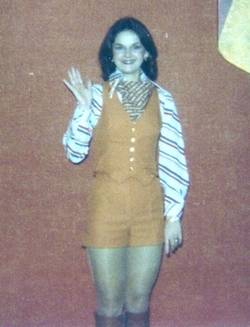 Ms. McKinney likes the choice
of airplane. "The 737 is the most-incredible airplane," she
thought. "I totally see why the 737 is called 'the Caddy of
airplanes.' It's a workhorse, strong; it's flexible, not too big,
not too small. It's easy to see why Southwest Airlines hasn't
deviated. [Little-known fact: Southwest had a pair of leased 727s
on the Dallas-Houston route briefly, in the late 1980s --ed]. We
carried 155 people, and on a 45-minute flight we served a beverage.
That 737 is an incredible airplane." That impression hasn't
changed: "The new ones, the 700s, are just beautiful." Practical,
too. Kay knows her airplanes: "Our original seating capacity was
112; now we carry 137. The new planes use less fuel, and have a
longer range (up to nearly 6 hours); they're faster -- and more
comfortable."
Ms. McKinney likes the choice
of airplane. "The 737 is the most-incredible airplane," she
thought. "I totally see why the 737 is called 'the Caddy of
airplanes.' It's a workhorse, strong; it's flexible, not too big,
not too small. It's easy to see why Southwest Airlines hasn't
deviated. [Little-known fact: Southwest had a pair of leased 727s
on the Dallas-Houston route briefly, in the late 1980s --ed]. We
carried 155 people, and on a 45-minute flight we served a beverage.
That 737 is an incredible airplane." That impression hasn't
changed: "The new ones, the 700s, are just beautiful." Practical,
too. Kay knows her airplanes: "Our original seating capacity was
112; now we carry 137. The new planes use less fuel, and have a
longer range (up to nearly 6 hours); they're faster -- and more
comfortable."
The cockpit crews aren't the same, either.
Kay started flying while the WWII and Korean-era
bomber and transport pilots still filled a lot of the commercial
airline pilot ranks. "The biggest change in the cockpits I've
seen," she said, "-- they're hiring them younger. They used to be
mostly military -- a lot more now are coming out of the private
sector -- they've flown private jets, or they come from schools --
that's really different. Even 10, 15 years ago, that was not the
norm."
What was it like -- wearing the hot pants, serving the business
crowd?
Southwest was never 'just another airline.' It
was always in its own image. "It was really weird. It was a
double-edged sword," Kay said.
"You knew you were unique -- you were unique. It wasn't
just hot pants -- it was orange hot pants, and brown
go-go-boots. We wore hats, fedoras -- you had to wear that hat to
and from the airplane. Mr. Herring was looking for that -- he was
real big on those hats. You felt totally unique and special -- you
knew you were special." That was exactly the image the
airline wanted to project.
"We knew we were little, up against all the big guys -- but we
knew we were special, as part of Southwest Airlines. That uniform
set us apart from everybody else." Maybe it was part of a plan,
after all: "It might have been why we had mostly business travelers
in those days," she mused.
Feeling special wasn't confined to the 737s, though. "Sometimes,
you'd be getting on a crew van at the airport, and there'd be some
employees from a different airline -- in that blue suit that
everybody else wore. We were all female, then, too. It set you
apart -- there was no doubt you were different."
The passengers loved it; the competition coped. "Sometimes," Kay
remembered, "you might have felt they were looking down their noses
at you. Southwest Airlines wanted to hang on to those hot pants for
as long as they could."
Eventually, they went for hot paint jobs, featuring special
events (Silver 1, the 25th Anniversary plane, bottom left
in the group below), or state on the routes (clockwise from top
left: California, Texas, Arizona, Nevada, New Mexico).
It wasn't long, after Kay had started flying, when
the change came. "We changed from the orange hot pants uniform in
late 1980, early 1981; then we went into a new uniform, with 'hot
pants optional.' Some did -- maybe 10 chose to wear them." There
was a plan afoot, though, maybe...
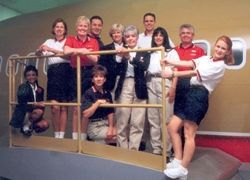 "The skirt was a wrap-around," Kay
told us, "but it didn't wrap all the way around. It had a slit in
the front, and when you sat down... so we had to wear the hot pants
anyway, under the skirt." Innovation and fashion, though, finally
caught up, and, Kay said, "That was about the end of the hot pants.
People figured out how to keep the skirt closed; then they
introduced a more-traditional skirt. Hot pants were dead and
gone... it was time to kinda 'grow up.'"
"The skirt was a wrap-around," Kay
told us, "but it didn't wrap all the way around. It had a slit in
the front, and when you sat down... so we had to wear the hot pants
anyway, under the skirt." Innovation and fashion, though, finally
caught up, and, Kay said, "That was about the end of the hot pants.
People figured out how to keep the skirt closed; then they
introduced a more-traditional skirt. Hot pants were dead and
gone... it was time to kinda 'grow up.'"
End of an era.
Ms. McKinney understood: "We were getting bigger, too
-- going to more cities, in more states. It wasn't that we changed
our image; we were mostly trying to set a different image for
Flight Attendants." Then the bottom fell out: "We started hiring
males in the early 1980s. That's when it really just had to
change."
Kay's family flies, and loves it. "My niece says, 'It
the same but different.' It's the same basic feeling, at least for
me. I've retained that feeling inside. I still feel the same way
about the job, what I do, and why I do it -- that's the way work
makes me feel." And it's different: "You don't know everybody you
work with -- there's thousands and thousands of employees now, from
all over the world. But Southwest Airlines 'culture' -- they love
that word at Southwest -- the Southwest Airlines culture has
not changed at all. We've gotten big -- we've had to do some
things differently, because we are a big airline now -- but what's
in the heart of Southwest Airlines has not changed at all. You can
see in their faces, in the letters passengers write -- I know it's
alive and well."
Herb Kelleher -- is he for real?
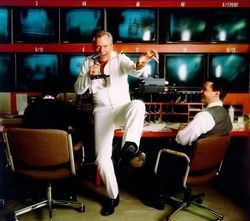 "Sometimes people ask, 'Is
that true about Herb? Is he that good; do you people really love
him that much?'" Kay answered her own question. "It is true... he
just is Herb Kelleher. He's real -- he's what you see -- he really
is that way. It's not an act; it's not done for publicity -- that's
the real man..."
"Sometimes people ask, 'Is
that true about Herb? Is he that good; do you people really love
him that much?'" Kay answered her own question. "It is true... he
just is Herb Kelleher. He's real -- he's what you see -- he really
is that way. It's not an act; it's not done for publicity -- that's
the real man..."
How different is it, since [co-founder] Herb Kelleher
retired?
Kay straightened us out: "Herb Kelleher didn't retire
-- he just shifted gears." In fact, she said, "He really hasn't
even slowed down. He's there -- he's in another capacity." He's not
running the day-to day, though: "Jim and Colleen [Jim Parker, Chief
Executive Officer and Vice Chairman of the Board of Directors, and
Colleen Barrett, President and Chief Operating Officer --ed]
assumed two of his titles and some of his responsibility. We all
knew that the day would come when there would be a change... sure,
he doesn't hold the titles; but he's still here... the transition
was really kind of seamless, because they all made it that way."
[Colleen Barrett was a legal secretary at Kelleher's law firm, and
came with him to Southwest 32 years ago --ed.]
So, the 'formula' that the industry's bean-counters talk about
is more than airplanes and routes? Management and employees matter,
too?
People make a difference?
Kay nailed a big difference between Southwest and so many
airlines, and not just other majors: "Everything has been done in
such a brilliant way all these years: Herb, Colleen, Jim -- all the
people who run SWA. Herb has always given his credit to all his
employees: 'I've taught you how to do this job; you could do this
job without me,' he'd always say. It's important to employees,
customers, everybody, that the transition be seamless."
It's easier to be upbeat, when you're confident in
the people who make the big decisions. Kay told us, "If you have
confidence in your leadership, your management... I never really
was worried that things would start unwinding, or unraveling. I was
looking toward that next 30 years of Southwest Airlines history.
Herb, Colleen, Jim Parker -- I just can't say enough. They lead by
example. They don't ask people to do anything they themselves
wouldn't do." Then Kay had to hustle to catch her next
flight...
[ANN Special Feature by Tim Kern]
 ANN's Daily Aero-Term (04.20.24): Light Gun
ANN's Daily Aero-Term (04.20.24): Light Gun Aero-News: Quote of the Day (04.20.24)
Aero-News: Quote of the Day (04.20.24) ANN's Daily Aero-Linx (04.21.24)
ANN's Daily Aero-Linx (04.21.24) Aero-News: Quote of the Day (04.21.24)
Aero-News: Quote of the Day (04.21.24) ANN's Daily Aero-Term (04.21.24): Aircraft Conflict
ANN's Daily Aero-Term (04.21.24): Aircraft Conflict





